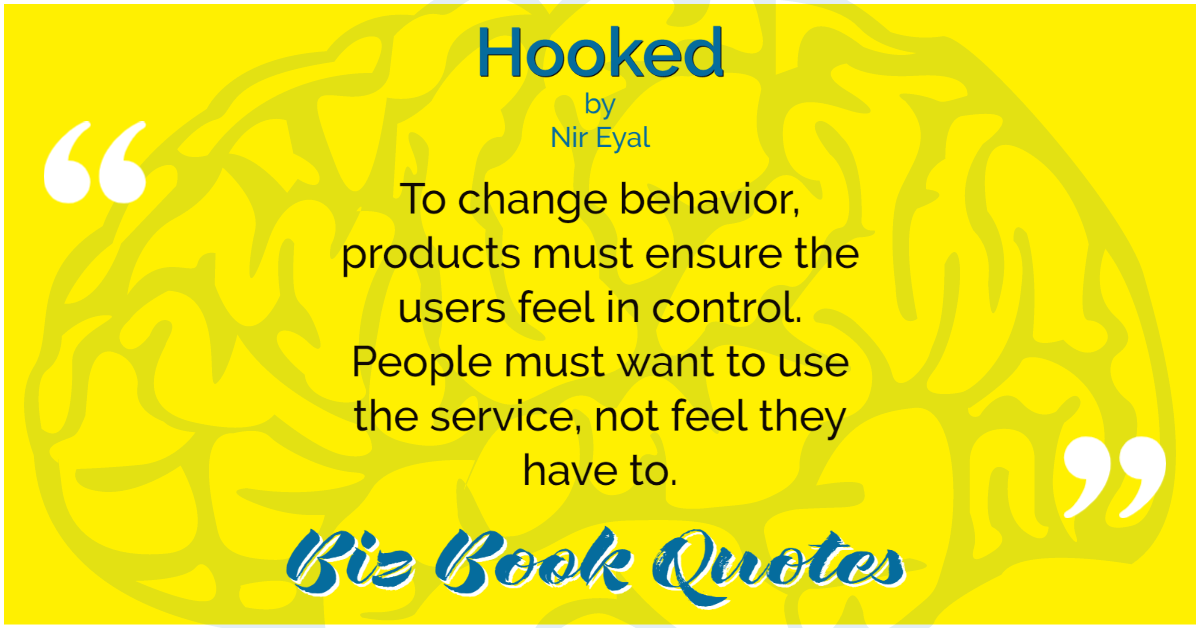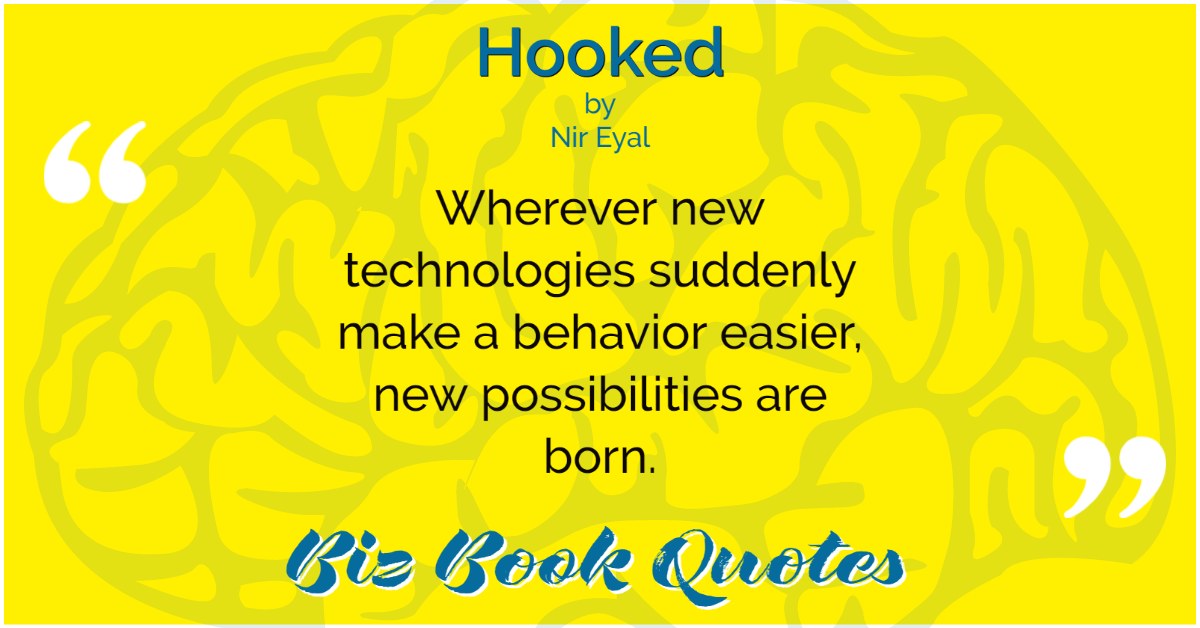 |
Companies that successfully change behaviors present users with an implicit choice between their old way of doing things and a new, more convenient way to fulfill existing needs.
|
124 |
 |
To change behavior, products must ensure the users feel in control. People must want to use the service, not feel they have to.
|
125 |
 |
Rationalization helps us give reasons for our behaviors, even when those reasons might have been designed by others.
|
141 |
 |
Habit-forming technologies leverage the user’s past behavior to initiate an external trigger in the future.
|
154 |
 |
Even though the world is becoming a potentially more addictive place, most people have the ability to self-regulate their behaviors.
|
171 |
 |
As a best practice, use cohort analysis to measure changes in user behavior through future product iterations.
|
196 |
 |
Observing your own behavior can inspire the next habit-forming product or inform a breakthrough improvement to an existing solution.
|
201 |
 |
…by looking to early adopters who have already developed nascent behaviors, entrepreneurs and designers can identify niche use cases, which can be taken mainstream.
|
202 |
 |
Looking for nascent behaviors among early adopters can often uncover valuable new business opportunities.
|
203 |
 |
Wherever new technologies suddenly make a behavior easier, new possibilities are born.
|
204 |